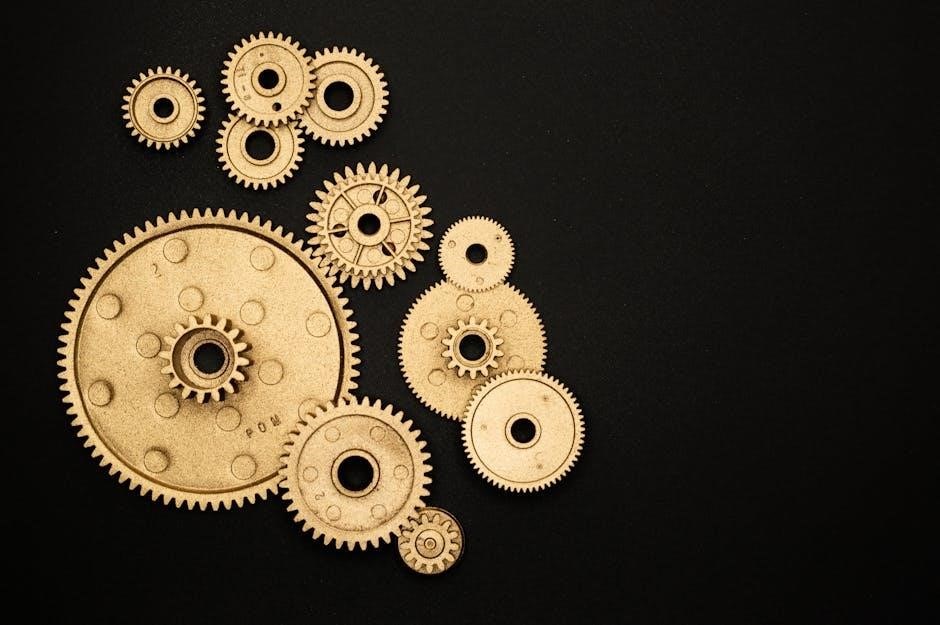Omega Sewing Machine Instructions: A Comprehensive Guide
This guide provides comprehensive instructions for your Omega sewing machine. It covers everything from basic operation and threading to maintenance and troubleshooting. Discover essential techniques and safety precautions to enhance your sewing experience.
Omega sewing machines are renowned for their durability and user-friendly design, making them suitable for both beginners and experienced sewers. This guide will help you understand the various features and functions of your Omega sewing machine, ensuring you get the most out of your investment. From threading the needle to mastering essential stitches, we’ll walk you through each step with clear, concise instructions. Whether you’re tackling simple repairs or complex projects, this guide will equip you with the knowledge and confidence to achieve professional-looking results with your Omega machine. Safety is paramount; adhere to all precautions.

Understanding Your Omega Sewing Machine Model
Identifying your specific Omega sewing machine model is crucial for accessing the correct user manual and understanding its unique features. This section guides you through the process of locating your model number.
Identifying Your Specific Model Number
To properly utilize your Omega sewing machine, you must first identify its specific model number. This number unlocks access to tailored instructions, compatible accessories, and relevant troubleshooting guides. Knowing your model number prevents confusion and ensures you’re using the correct techniques for your machine. This information can usually be found printed directly on the machine’s housing, often near the power switch or on a label underneath the machine. Check your purchase documentation. Once identified, record this number for future reference when seeking support or ordering parts.
Locating the Model Number on the Machine
Finding the model number on your Omega sewing machine is crucial for accessing model-specific resources. Typically, the model number is printed on a sticker or plate affixed to the machine’s body. Start by checking the front, side, and back panels. Look closely around the power switch or near any control knobs. If you don’t find it there, carefully turn the machine over and inspect the underside. The model number is often located on a label along with other manufacturing information. If you still cannot locate the number, consult the original packaging or your purchase receipt.
Basic Operation and Setup
Proper setup is essential for optimal performance. This section covers threading the needle, winding the bobbin, and inserting the bobbin correctly. Master these fundamental steps to begin sewing smoothly.
Threading the Needle
Threading the needle is a crucial first step. Begin by raising the presser foot and positioning the thread spool correctly. Follow the thread path indicated on your Omega sewing machine. Guide the thread through each tension disc and guide, ensuring it sits properly in each location.
Next, carefully thread the needle from front to back, or as indicated by your model. A needle threader can be helpful for smaller needle eyes. Pull a sufficient length of thread through the eye. Lower the presser foot before you start to sew.
Winding the Bobbin
Winding the bobbin correctly is essential for even stitching. Place the thread spool on the spool pin and follow the thread guide towards the bobbin winder. Wind the thread around the bobbin a few times by hand to secure it. Snap the bobbin into the bobbin winder mechanism.
Engage the bobbin winder, usually by pushing it to the side. Start the machine, allowing the bobbin to wind evenly. Once full, the bobbin winder will often disengage automatically. Cut the thread and remove the wound bobbin, ready for insertion into your machine.
Inserting the Bobbin
Inserting the bobbin correctly is crucial for proper sewing. First, locate the bobbin case, which can be front-loading or top-loading, depending on your Omega model. Open the bobbin case compartment. For front-loading machines, the bobbin case might need to be removed entirely.
Insert the bobbin into the bobbin case, ensuring the thread unwinds in the correct direction (refer to your machine’s diagram). Thread the bobbin thread through the tension spring of the bobbin case, leaving a tail of a few inches. Replace the bobbin case (if removed) and close the compartment.

Essential Sewing Techniques
Mastering essential sewing techniques is vital for any sewer. Learn about straight stitching, zigzag stitching, and adjusting stitch length and width. These techniques will form the foundation for more complex sewing projects.
Straight Stitching
Straight stitching is the most fundamental sewing technique. Ensure the fabric is properly aligned under the presser foot. Select the straight stitch setting on your Omega machine. Maintain a consistent speed while guiding the fabric; Practice on scrap fabric to achieve even stitches. A straight stitch is used for seams, topstitching, and various construction purposes. Adjust thread tension if puckering occurs. Consistent stitch length contributes to seam strength; Secure the beginning and end of the seam. Proper alignment and consistent speed are key to achieving perfect straight stitches on your Omega.
Zigzag Stitching
Zigzag stitching is a versatile technique used for finishing raw edges and creating decorative effects. Select the zigzag stitch setting on your Omega sewing machine. Experiment with different stitch widths and lengths to achieve desired results. This stitch is ideal for preventing fraying on fabric edges. Use it for buttonholes or attaching elastic. Practice on scrap fabric to master control. Ensure fabric moves smoothly under the presser foot. Adjust stitch width to suit the fabric thickness. Secure the beginning and end of the seam. Try using it for applique. Zigzag stitching adds flexibility and durability to your sewing projects.
Adjusting Stitch Length and Width
Adjusting stitch length and width is crucial for achieving optimal sewing results with your Omega machine. The stitch length controls the distance between each stitch. A shorter stitch length creates a denser, stronger seam, ideal for delicate fabrics. A longer stitch length is suitable for thicker materials or basting. Stitch width determines the sideways movement of the needle. Increase the width for wider zigzag patterns or decorative stitches. Decrease it for narrow seams or reinforcement. Test different settings on scrap fabric before starting your project. Understanding these adjustments will enhance your sewing precision and versatility.
Troubleshooting Common Issues
This section addresses common sewing machine problems. From needle breakage and thread jamming to skipped stitches, find solutions to keep your Omega sewing machine running smoothly and efficiently. Let’s troubleshoot together.
Needle Breakage
Needle breakage is a frequent issue. Several factors can cause this, including using the wrong needle type for your fabric. Ensure you’re using the correct needle size and type for the material. A dull or damaged needle can also cause breakage; replace it regularly. Incorrect threading or bobbin issues might contribute.
Check that the needle is properly inserted and not bent. Avoid pulling the fabric while sewing, as this puts stress on the needle. If problems persist, consult a qualified technician to examine your Omega sewing machine for mechanical issues. Proper maintenance prevents breakage.
Thread Jamming
Thread jamming is a common frustration with sewing machines. It often occurs due to improper threading. Double-check that the machine is threaded correctly, following the manual’s instructions. A poorly wound bobbin can also cause jamming. Ensure the bobbin is wound evenly and inserted correctly into the bobbin case.
Lint and debris accumulation can contribute to the problem. Clean the machine regularly, focusing on the bobbin area and feed dogs. Using low-quality thread can also lead to jamming. Always use good-quality thread. If jamming persists, try re-threading the machine and replacing the needle. Consult a repair technician if needed.
Maintenance and Care
Proper maintenance ensures your Omega sewing machine operates smoothly. Regular cleaning and oiling are essential for longevity. Learn the correct procedures to keep your machine in top condition, preventing costly repairs.
Cleaning the Machine
To ensure optimal performance and longevity of your Omega sewing machine, regular cleaning is crucial. Begin by disconnecting the machine from the power source to prevent any accidental operation during the cleaning process. Remove the needle plate and bobbin case, carefully brushing away any lint or thread buildup with a small brush. Use a soft, dry cloth to wipe down the exterior surfaces of the machine, removing dust and debris. For stubborn residue, a slightly damp cloth can be used, but ensure the machine is completely dry afterward. Regular cleaning prevents thread jams and maintains smooth operation.
Oiling the Machine
Proper lubrication is essential for the smooth operation of your Omega sewing machine. Consult your machine’s manual to identify the specific oiling points. Typically, these include areas around the bobbin case, needle bar, and other moving parts. Use only sewing machine oil, as other types of oil can damage the internal components. Apply one or two drops of oil to each designated point. After oiling, run the machine at a slow speed on a scrap piece of fabric to distribute the oil and remove any excess. Regular oiling prevents friction and wear, extending the life of your machine.

Finding a User Manual
Locating the correct user manual is vital for operating your Omega sewing machine effectively. This section guides you to online resources and other methods for obtaining the manual specific to your model.
Online Resources for Manuals
Several online resources can help you find a user manual for your Omega sewing machine. Start by checking the manufacturer’s website, if available, for downloadable manuals. Many third-party websites specialize in hosting user manuals for various appliances, including sewing machines. These sites often allow you to search by brand and model number, making it easier to pinpoint the exact manual you need.
Additionally, online forums and communities dedicated to sewing may have members who can provide a copy of the manual or offer guidance on where to find it. Don’t forget to search online auction sites, where manuals are sometimes sold.

Safety Precautions
Always prioritize safety when operating your Omega sewing machine. Keep fingers away from the needle and moving parts. Disconnect the machine when not in use and avoid using damaged cords.
Avoiding Injury While Sewing
To prevent injury while using your Omega sewing machine, always focus on the task at hand. Avoid distractions and maintain a safe working environment. Never place your fingers too close to the needle or moving parts while the machine is in operation. Use a seam ripper or other tools to remove fabric, instead of your fingers, when close to the needle. Ensure adequate lighting to see clearly and reduce eye strain. If you feel tired or distracted, take a break to avoid accidents. Always supervise children when they are near the sewing machine and store it safely when not in use.
